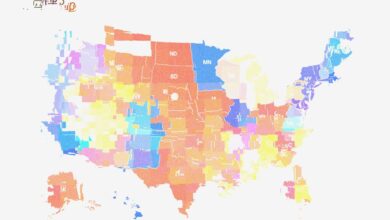

It’s a new ballgame.
Photo-Illustration: Intelligencer; Photos: Getty Images
The sharp improvement over Joe Biden’s position in the national popular-vote polls that Kamala Harris has achieved since the Great Switcheroo of July 21 has justifiably gotten a lot of attention. After all, in today’s hyper-polarized environment, a six-point swing from a race where Trump was leading Biden (per the FiveThirtyEight averages) by 3.2 percent nationally to one where Harris is leading Trump by 2.9 percent is a very big deal, reflecting a big uptick in Democratic enthusiasm and a significant drop in the “double hater” vote (and correspondingly, in Robert F. Kennedy Jr.’s support).
But as we were reminded in the Republican victories of 2000 and 2016, and Donald Trump’s near-miss in 2020, presidential elections are decided in the Electoral College rather than the popular vote, which national polls estimate. And Kamala Harris’s most significant accomplishment in the last three and a half weeks has been to climb into a highly competitive position with Trump in the seven battleground states where the deal will ultimately go down.
To be clear, Biden’s chronically poor performance in five of these states was a big part of the panic afflicting Democrats even before his terrible debate performance on June 27 and subsequent waffling over withdrawal. On the day Biden did fold his tent (July 21), in the FiveThirtyEight averages Trump was leading him by 5.5 percent (45.0 to 39.5 percent) in Arizona; by 5.8 percent (44.3 to 38.6 percent) in Nevada; by 5.9 percent (45.1 to 39.2 percent) in Georgia; by 6.9 percent (45.6 to 38.7 percent) in North Carolina; and by 4.4 percent (45.5 to 41.1 percent) in Pennsylvania. Biden was also trailing Trump in Michigan (42.4 percent to 43.8 percent) and Wisconsin (42.2 to 44.5 percent), but by smaller margins, which convinced most observers that Biden’s narrow path to 270 electoral votes was via a sweep of the Rust Belt “blue wall” states. This in turn fed the obsession in some circles with Biden’s weakest “blue wall” state, Pennsylvania, which was reflected in the punditry consensus that Harris ought to choose Keystone State governor Josh Shapiro as her running mate.
But at present Harris is in a very different position in the battleground states. There hasn’t been enough recent polling in North Carolina for FiveThirtyEight to conduct averages, but she leads Trump in five of the other six crucial states: in Arizona by 0.7 percent (45.3 to 44.6 percent); in Georgia by 0.1 percent (45.8 to 45.7 percent); in Michigan by 3.4 percent (46.3 to 42.9 percent); in Wisconsin by 3.6 percent (47.4 to 43.8 percent); and yes, even without Josh Shapiro on the ticket, in Pennsylvania by 2.2 percent (46.4 to 44.2 percent). Trump is hanging onto a 0.1 percent lead (44.5 to 44.3 percent) in Nevada.
So the Blue Wall is looking reasonably solid, and more importantly, Harris has regained a competitive position in the Sun Belt battlegrounds, with the race basically tied in three of Biden’s weaker states (Arizona, Nevada, and Georgia). Strategically, this makes all the difference in the world, since Harris now has multiple paths to 270 electoral votes. Underlying this Sun Belt recovery is Harris’s superior strength among younger, Black, and Latino voters. An August 2 likely voter survey from CBS-YouGov showed Harris at over 60 percent among under-30 voters, and over 80 percent among Black voters. And a large-sample survey of Latino voters in Arizona, Nevada, Pennsylvania, Michigan, Wisconsin, Georgia, and North Carolina in late July from BSP Research shows Harris leading Trump by a robust 55-37 percent, a margin almost exactly replicated in an early August battleground state Latino survey from Equis. It’s definitely a whole new ball game with an expanded battleground map.
It’s worth noting that in two crucial battleground states, Arizona and Nevada, Harris and other Democrats may get a boost from newly certified ballot initiatives to protect abortion rights. These initiatives will help keep voters focused on partisan differences over abortion rights, and could produce a beneficial turnout surge among voters likely to lean Democratic. Limited polling has showed the Arizona initiative being favored by about 2-1, with even higher support for the initiative in Nevada.
There are competitive U.S. Senate races in five presidential battleground states: Arizona, Nevada, Michigan, Pennsylvania, and Wisconsin. According to the RealClearPolitics polling averages (FiveThirtyEight is not offering averages for Senate races at this point), the Democratic nominees are leading in all of these races. In Arizona, Ruben Gallego leads Kari Lake by 3.4 percent (47.0 to 43.6 percent); in Nevada, Jacky Rosen leads Sam Brown by 4.0 percent (46. 7 to 42.7 percent); in Michigan, Elissa Slotkin leads Mike Rogers by 5.4 percent (46.4 to 41.0 percent); in Pennslyvania, Bob Casey leads Dave McCormick by 6.8 percent (49.4 to 42.6 percent); and in Wisconsin Tammy Baldwin leads Eric Hovde by 6.1 percent (50.1 to 44.0 percent). In fact, the Democrats have led in every published poll of these races so far. None of the Democrats in these contests are distancing themselves from the national ticket — indeed, some are much warmer toward Harris than they were toward Biden. That means presidential and Senate campaigns will be closely coordinated, and, they hope, mutually reinforcing as Democrats continue their upward trajectory.
Source link




